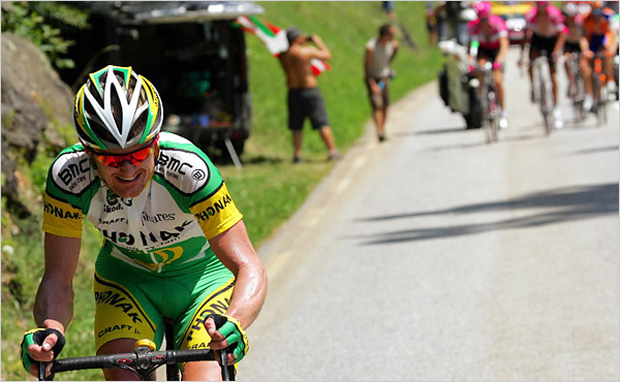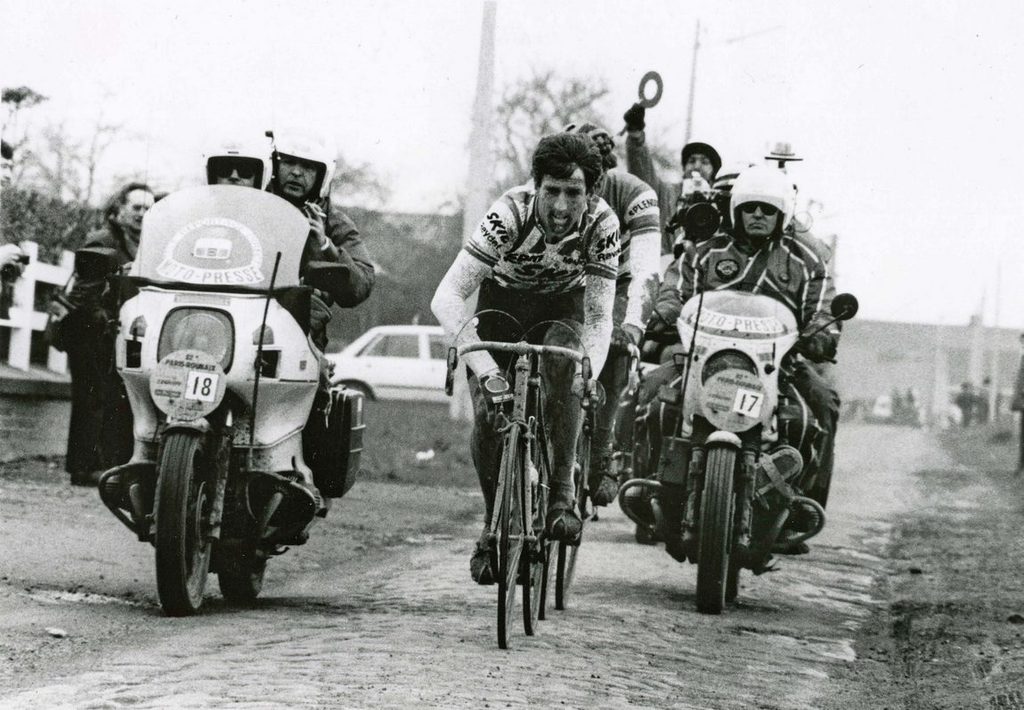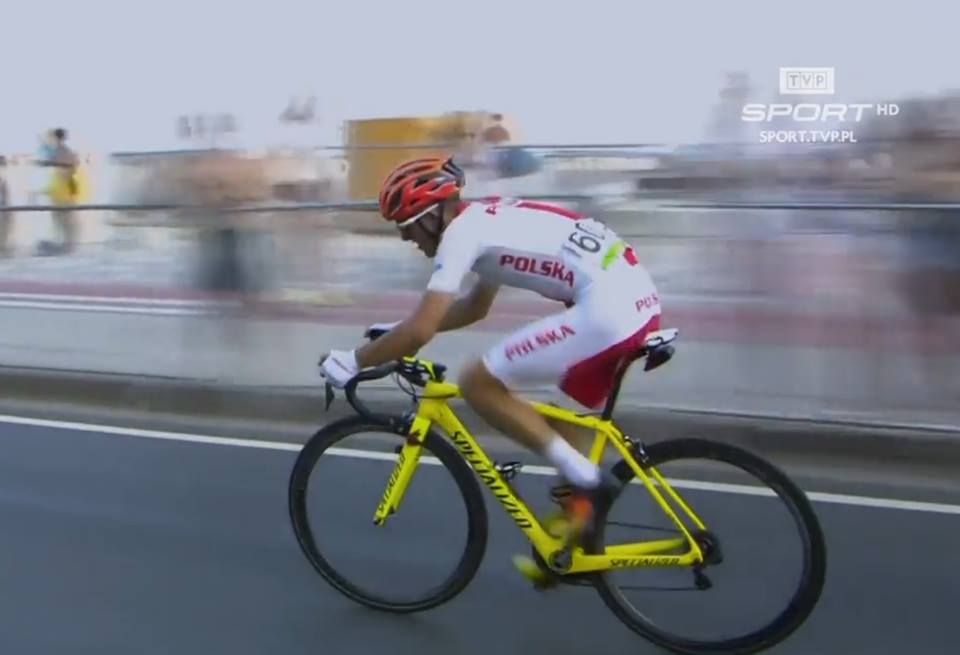The Longest Case

After almost 14 months, the verdict was finally handed down in the Floyd Landis doping case. A three-person panel voted 2-1 to find Landis was found guilty of doping during the 2006 Tour de France, stripped of his title, and has been suspended for two years.
I have mixed feelings about this case: I was never a fan of Floyd’s, but Stage 17 of the 2006 Tour (where he later returned a positive dope test) was one of the most exciting I’ve ever seen, and I instantly became a fan of his.
We were in France during the 2006 Tour, and were at the roadside of the stage to Pla-de-Beret where Landis first took the Yellow Jersey. We then spent the next few days following the Tour on-and-off, catching the news in the French daily paper, L’Equipe, or watching some of the day-long television coverage. (By the way, one of the great things about being in France during the Tour is listening to the commentators go nuts whenever a Frenchman appears on the TV; some random French domestique will get in a breakaway and they immediately start jabbering about the rider’s chances of winning the Tour. Their optimism is kind of sweet, really. )
Then we headed into the Alps for a few days and missed one day of coverage. That happened to be the stage to La Toussuire where Landis cracked and fell more than eight minutes behind. We turned the television on the next day and were completely confused by what we were seeing: the stage had just hit the first mountain, and Floyd’s team was on the front racing as though they were 10k from the finish. Suddenly Landis – who we were surprised to see was no longer in yellow – rode away from the race. We feverishly tried to figure out what was happening, and why Landis didn’t appear to be in contention anymore. (Another odd thing about being in France during the Tour is that unless you’re up to speed on all the French slang around cycling, it’s a big struggle to truly understand what’s going on from the papers.)
We finally figured out that Landis had cracked and lost heaps of time; what we were seeing was a super-hero mission to gain back as much of time as possible. He managed to pull it off, and eventually won the Tour. It was epic. It was inspirational, and we immediately became fans. One of the first things we did when we set up our workshop in our basement when we moved to Seattle was pin up L’Equipe’s issue from the following day showing Landis cruising to a beautiful stage win.
I don’t know if Floyd doped, and doping in cycling continues to be a topic that I’m incredibly conflicted about. Does it matter whether he doped? Was the inspiration I felt that day as well as the excitement over the next few days false because he doped? Not necessarily. That experience belongs to me; just because his performance may have been “enhanced” doesn’t invalidate what I took away from it. I spend my life building software and none of that is real, either – you can’t touch it or prove it exists, but you can still experience it and take something from it.
At the same time, if he doped – and especially if he was doing so while everyone else was clean – then he should be punished. If Oscar Pereiro was clean and got second, then he deserves to be named the winner.
The problem of doping in cycling is both a cultural and scientific one. Doping in cycling – and, in fact, sport in general – is deeply rooted into the culture surrounding the sport. Young riders are told by older riders and team management that they need to dope in order to succeed. The young riders become the older riders, the older riders retire and become team directors and managers, and the circle continues.
Techniques to pass and avoid doping controls are shared among teams and riders, and the various agencies and labs conducting the doping controls are allegedly bought off by teams to suppress results. That doesn’t even touch on the fact that a huge number of items on the World Anti-Doping Agency’s prohibited substances list – something like 80% – can’t be tested for. Of those that do have tests, many depend on allowable thresholds – including the test for testosterone which Landis failed. In those cases, there is no flashing red light that indicates a positive test; the lab technicians use their judgment and experience to decide if a sample is positive for doping. Although the lab scientists are highly trained and disciplined, the fact that one could claim that the findings are subjective opens the door to questioning the credibility of the results.
The culture, the possibility (or even likelihood) of riders doping without being caught, and the credibility of the tests conspire to turn the fight against doping into a big hairy mess. You have people speaking out against doping and claiming the sport is cleaning up while rumors persist that doping is rampant. And, those riders who do fail dope controls swear they are clean and are wrongfully accused.
I hate the idea of riders being singled out if everyone else is also doping. I hate the idea of riders being wrongfully accused. I hate the idea of riders doping. I hate the idea that there doesn’t seem to be a good way to deal with the problem. But I love cycling, and with or without doping, it’s still the most difficult and beautiful sport.


Bump on this article because evidently this shit aint over yet. I wake up this morning, turn on National Public Radio and they’re reporting on Roid’s latest ego feeding shanannigans. I don’t really care all that much. What’s preterbing though is this is always the way cycling news makes mainstream media. Not yesterdays’ epic GC-shuffling stage at the Giro, not Spartacus’ peleton crushing spring classics campaign, not Good Cadel doing the Rainbow jersey justice, and not this awesome fucking blog. It’s has-beens like Roid Landis and LeMelvis trying to keep their disgraced names alive by pulling some National Inquirer style expose. I say, bugger off Roid and LeMelvis, you’ve been added to the Lexicon.
@Marko Did not hear NPR but a friend just emailed this:
http://www.nydailynews.com/sports/more_sports/2010/05/19/2010-05-19_floyd_landis_says_lance_armstrong_others_were_involved_in_blood_doping_during_to.html
This Quote:”One of the sources with knowledge of the situation said that Landis, who vigorously but unsuccessfully fought against a competition ban after he tested positive for exogenous testosterone in 2006, had come forward now with the allegations in order to clear the air.
“He knows he contributed to the problems in cycling,” said the source. “He wanted to enlighten people, and he wants to leave the sport in a better place than where he started it. He had a feeling that was an obligation he had to fulfill.”
Roid just can’t decide what is the right path it must be very discouraging to flip flop so much about your “feelings”?
It’s a sad world where even the Amish (or is it Mennonite – god this sect thing) have bad apples…
The only conclusion (made years ago) is that if you’re in the top 25 of pro results your doing it. Personally I think even Lemond used roids for a bit early in his first year as a pro to bulk up.
If they would all just come out with it in all sports then we could get on with accepting it as inevitable or have 2 divisions – pumped up and wimpy (I personally would love to be in that league as that was the league I was in 30 years ago).
The good thing is maybe Roids total duchieness will be the dam breaker and the stables will get cleaned out?? One can only hope…
yeah…I agree with both of you. I can’t understand how he run the “Floyd Fairness Fund” and collected donations and then turns around and says “I doped”. I mean, yeah, they all do it, yeah, it was a level playing field, but surely there is some kind of lawsuit coming from the people who donated?
Mountaineers are allowed to use supplemental oxygen to get to the top of high mountains; how is that different from using EPO to get to the end of a 3 week Tour? Allegedly, both are safe(ish) when used appropriately.
Oh it’s different man. Mostly because humans can’t live for very long above 18000 feet or so. The alpinists who’ve summitted the highest peaks w/o oxygen (Mesner, Veisturs, 500 sherpas) are the hardmen of that sport. Yes, it’s an accomplishment to climb K2 or Annapurna with O2, but it’s way cooler to do it without. Cyclists aren’t doping to survive or get to the end, they’re doping to win. That’s cheating.
@Marko
++1
@Marko
I disagree. I think the domestiques – the Rolf Aldags of the sport – are doing it to survive. It’s still cheating, but I think oxegen on the peaks is, too. The human body can obviously handle it. Rule #5.
@frank
Not everyone’s body can handle it, only some can. It comes down to, strangely enough, the body’s ability to transport oxygen in the blood. Physiologically speaking, some people have it, some don’t, and some can acclimatize to an extent but genes play a big role. Just ask a sherpa. The fact is, nobody can survive for long in the “death zone”. Even hardmen like Mesner and countless sherpas need to come down. Their success is based on genetic make-up, training, acclimatization, and efficiency but they would die sooner or later. Aldag wouldn’t die, he just wouldn’t be able to keep up and DNF. It’s two different things past a certain point until they start adding Everest as a hors categorie climb. Plus, alpinists aren’t competing mano-a-mano. Sure there’s a competitive spirit, but at the end of the day they all realize they’re flirting death and won’t do stupid shit (unless they’re guiding clients at $75K a head)
@Marko
You make a great point about competition in cycling versus Mountaineering.
But, the ability to transport oxygen in the blood is precisely what EPO is designed to address. The consequences are there, but there was an expedition to K2 in 1939 that had three climbers above 26,000 for several weeks without oxygen and they were fine (until the third dude died.)
So, the question is this: if climbers took EPO to reach Everest without oxygen, is that better or worse or the same as climbing with suplemental O2? Would that be doping?
And with that question, I don’t mean to ask if it’s cheating, because as you say, it’s hard to cheat when you’re not competing against others directly.
@frank
This is certainly a weird tangent. A few points: the human body cannot sustain itself at those altitudes and thus oxygen is needed and therefore not just merely an advantage. EPO is not needed for cycling survival and thus only serves to gain advantage, O2 is not banned by the climbing community and contrarily is required on expeditions if/when needed, EPO is a banned substance presumably because it is understood that it is unecessary to perform at safe and high levels. It’s apples and oranges eventhough some of the physiology is parallel. The argument that alpinists using oxygen is no different than cyclists doping does not hold water.
@Marko
I’m not making that argument, I’m asking the question: First, if climbers took EPO to reach Everest without oxygen, is that better or worse or the same as climbing with suplemental O2? Second, is that doping.
It’s a ridiculous question I’m asking; if you follow it through, then putting on a coat to stay warm, getting in a car, or on an airplane or astronauts using space suits could all be considered cheating and doping, too.
But it’s an interesting question: Why is it different from doping? Sure, you can’t survive at altitude, but using supplemental oxygen is “performance enhancing” nevertheless because being alive is by definition “enhanced performance” over being dead, no? When you boil it down, it’s just different orders of magnitude in what kinds of risks, rewards, and consequences there are.
I’ve been reading the newish K2 book by Viesturs and that got me thinking about this. At a fundamental level, why is it different? I think the answer is that it’s not different. If enough climbers started climbing w/o oxygen, I think a similar mentality would take place. But, most people can’t do it without, so it’s OK. I think if you actually poll the pro peleton and they somehow answered you honestly, they would tell you they can’t compete without doping in exactly the same way. Which is why we have this huge chasm between the public, who don’t understand, and the pros, who understand and look for the path of least resistance.
@Marko
And yes, weird tangent! That’s what I love about this site, the conversation is uncontrolled and just goes where it goes. It’s awesome!
@frank
Sure, but would you give a man a foot massage?
You could argue that those climbers who summit Everest without oxygen are merely better adapted to the discipline than those who resort to oxygen. But, it’s not a parallel to EPO in sport. The comparison would be if someone clean could win the Tour racing against people who are brimmed with EPO. Which is no.
The other issue is that we all have naturally different hematocrit levels, at a rough pointer this is why some people are better at endurance events than others. So everyone topping up to 50% as they did in the 90’s meant some got more of a boost than others. Meh.
Role on the salacious gossip and we’ll see who burns